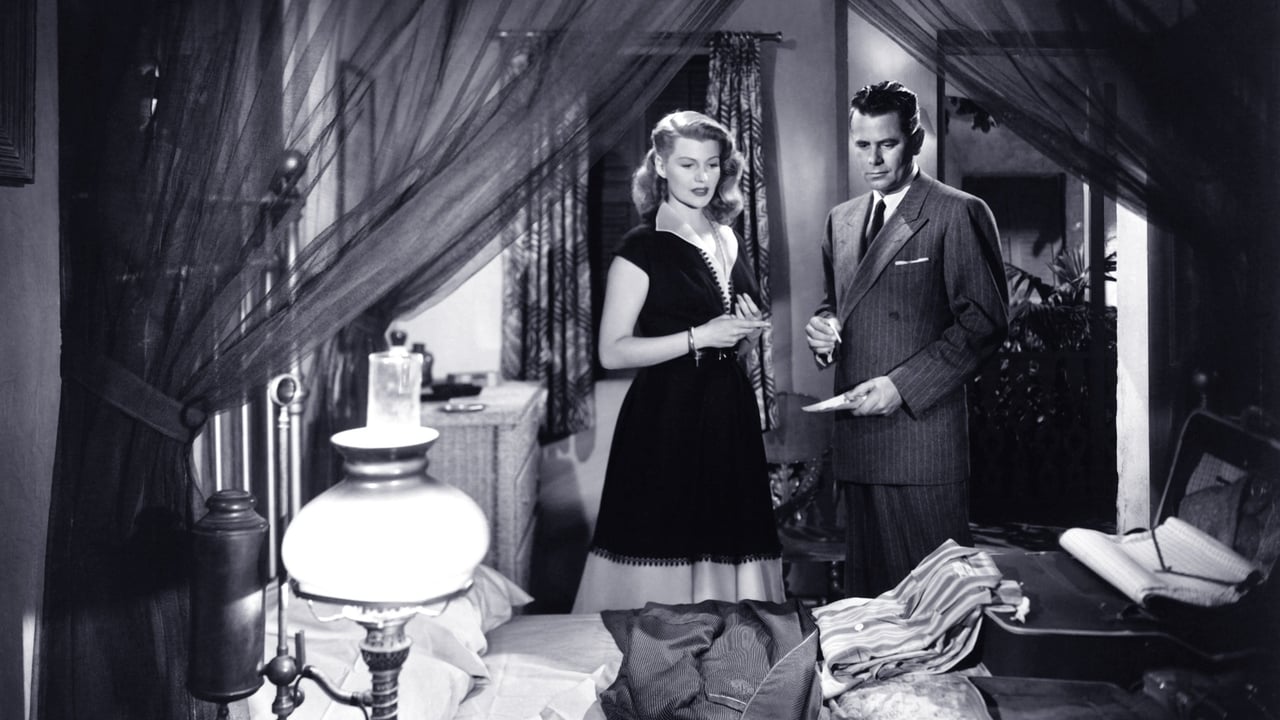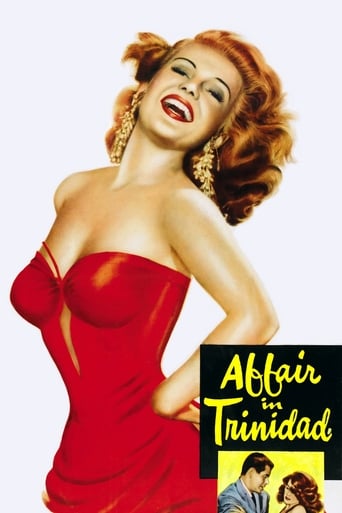

While I do realize that Rita Hayworth had enough sex appeal to cause an international crisis on her own, I was struck by the anti-USA plotters map showing - in the last half of the movie - missile targets in the USA. Could this movie and that map inspired the USSR to place their missiles in Cuba during the 1960s? But let's get back to the movie and to its many smokers: Rita, and Glenn especially. They again, were both truly HOT working together. I wonder just how well they 'clicked' off screen? Of course, the movie duplicated many aspects of "GILDA". But who cares, it still holds up well. But I was amazed at two things in the movie: how much everyone smoked AND how many wore heavy clothes for topical TRINIDAD.
... View MoreI've been in a few seedy nightclubs around the world and I have yet to find one where Rita Hayworth was saucily dancing in her bare feet. The rest of this mystery I've already forgotten and is just there as a vehicle for Rita's dance numbers (her singing was dubbed). The film was 'produced' by the Beckworth Corporation which was actually a front set up by Hayworth to reduce her tax bill. I'm not sure why they chose Trinidad as the locale, they didn't film one scene there and there weren't any Trini accents, music, or culture to be found in the movie. At the time T&T was simply a place in the Caribbean known for having a few US Naval bases and the subject of the song "Rum and Coca-Cola." This affair didn't end soon enough for me.
... View MoreAbove average film starring Glenn Ford and Rita Hayworth once more.In this one, Ford comes to Trinidad just in time to learn that his brother as supposedly committed suicide and meets Hayworth, the widow.Hayworth is fascinating in the role and an absolute joy to watch. She can do some really heavy duty acting here and then break into a wonderful song and dance routine. Both her singing and dancing are up to par here as well as a wonderful plot involving spies. Hayworth has been asked by the government to infiltrate the ring and it appears that she is very much against her brother-in-law in an attempt to shield him from apparent danger.Alexander Scourby is excellent in the villain role.
... View MoreIt's ironic that Rita's 1952 return to the screen was shot in black and white when her film in 1948 "The Loves of Carmen" was filmed in color. For her comeback film, you would have thought Harry Cohn would have given everything to the film to make it appealing: Rita, Glenn Ford, a similar film to "Gilda" in plot and style, and some songs (dubbed as usual) and dances for Rita.It's an okay film, but it's a bit unbelievable in spots. For example, Rita is trying to sneak around late at night in someone's house to uncover information while she is wearing her high heeled shoes. Wouldn't she have taken the shoes off to avoid making a sound so as not to be heard? She danced barefoot in one number, so it's not like the studio didn't want to show her shoeless. Another thing is how can her brother in law fall madly in love with her after a mere three days after discovering his brother has died? I enjoyed it, but to appreciate Hayworth's talent, there are better movies to see. Ironically, this movie made much more money than "Gilda" did!
... View More